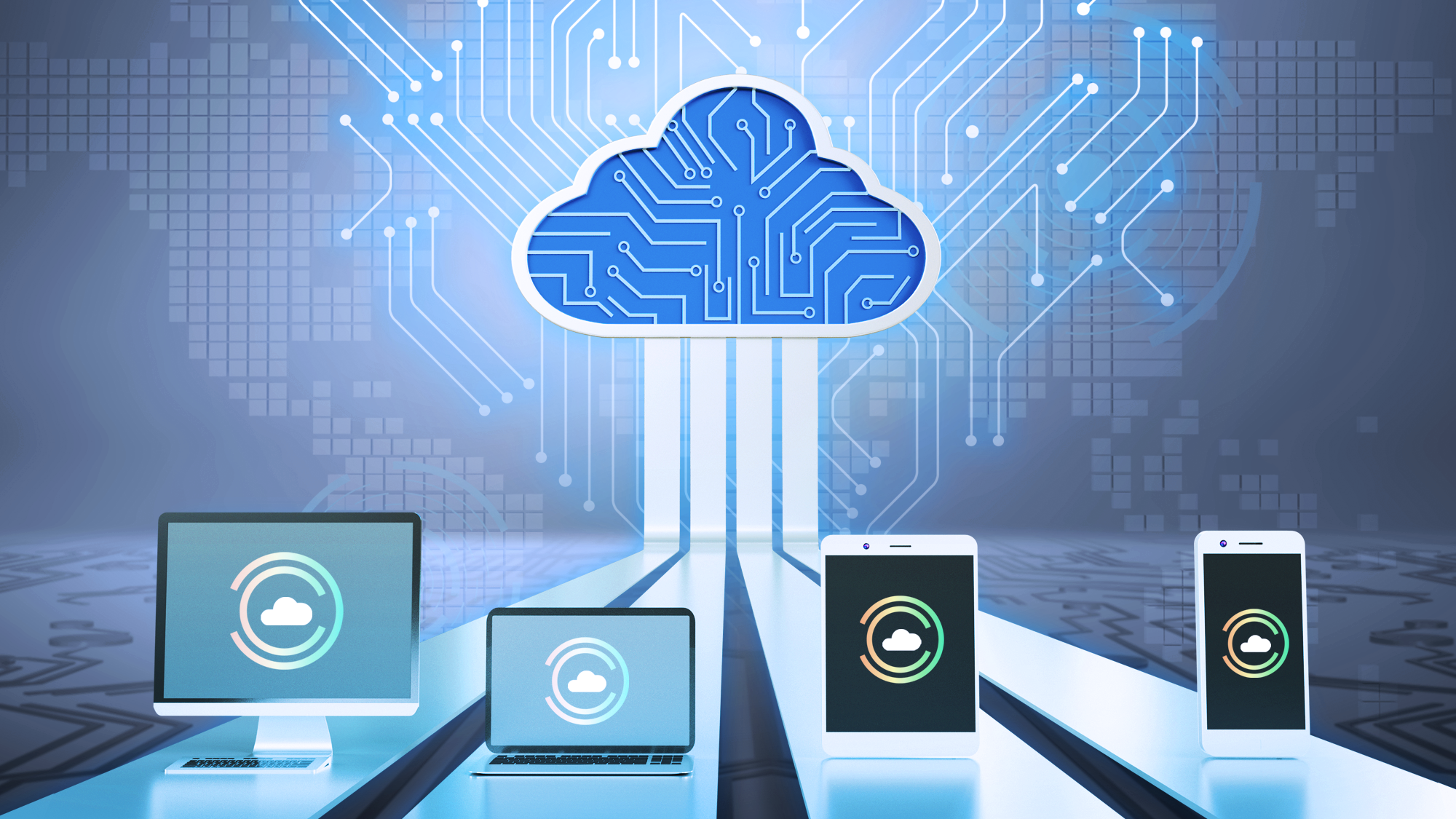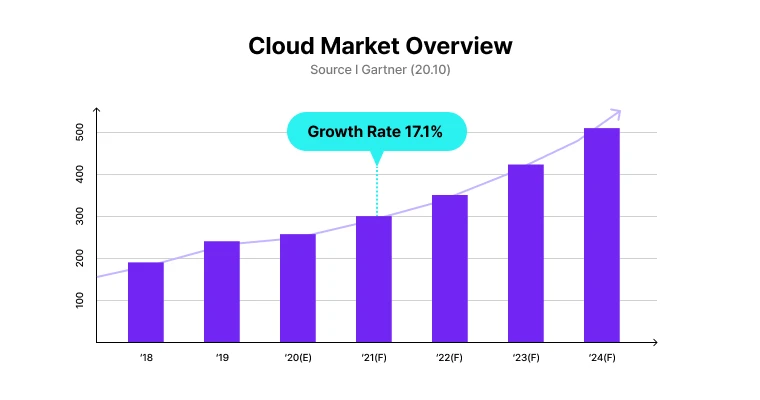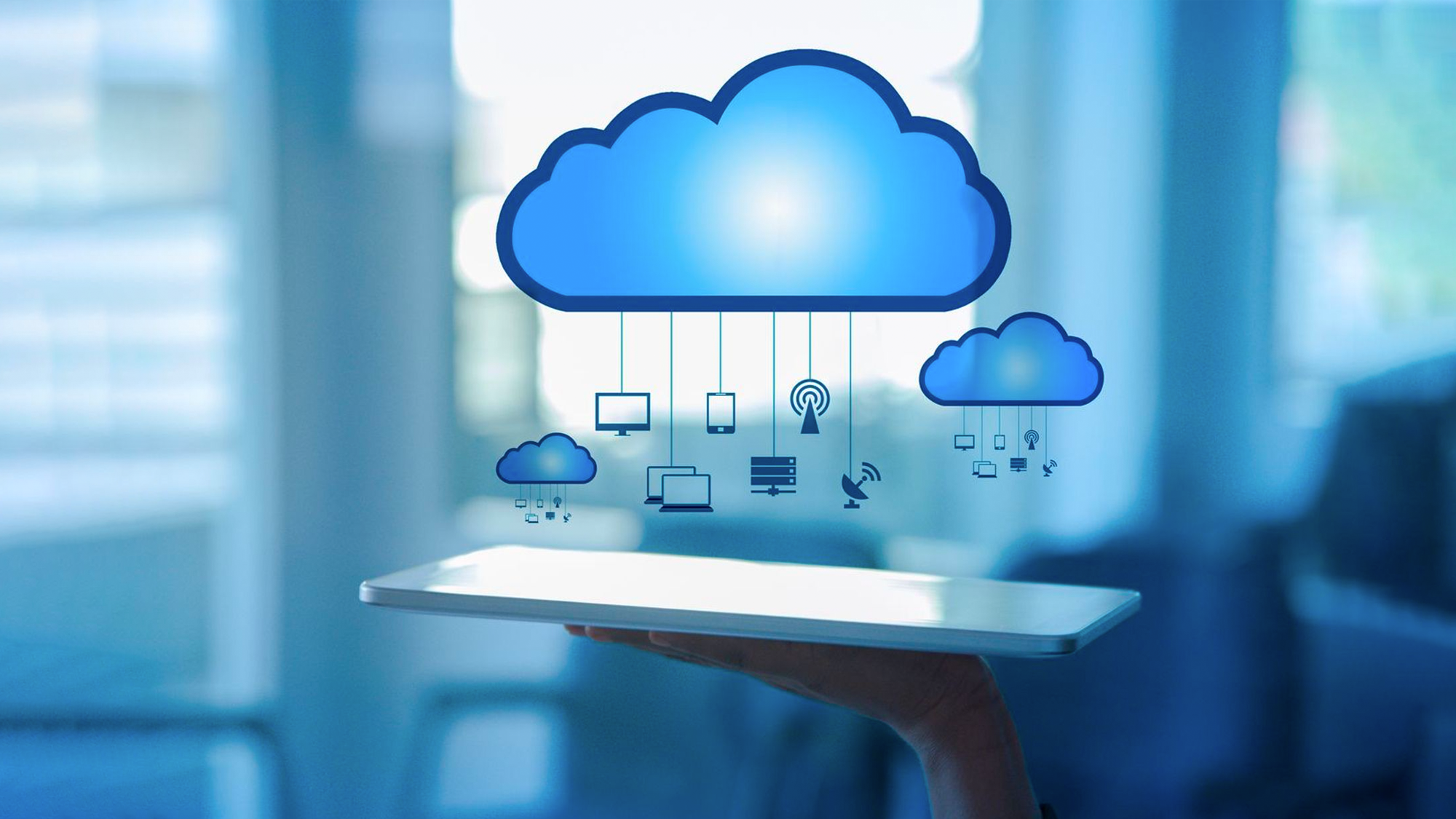Defining the Cloud: The Key to Accelerating Digital Transformation (DX)
Elice
3/22/2023
What is the cloud?
How exactly should we understand cloud technology? Today we will be defining cloud services and examining their role as a core technology in accelerating digital transformation.
What is cloud technology?
The cloud refers to a computing environment in which software and other data are stored on servers that can be accessed simply by connecting to the Internet. The aforementioned data encompasses almost all IT resources, such as storage, servers, and software. The cloud operates by storing software and content on high-performance computers owned by a provider, which users can readily access given only a computer, operating system, and network connection. Services we commonly use for file storage or document management like Dropbox, or Notion can be considered cloud services.

Types and examples of cloud platforms
A cloud platform is software that provides the components necessary for companies to build cloud environments more easily. Users can develop code or run applications on online environments provided by cloud platforms, as well as have storage, virtual servers, networks, and more managed by it. Based on its architecture and scope of services offered, cloud platforms can be put into different categories.
Based on which cloud service resources are provided, cloud platforms are categorized into IaaS, PaaS, or SaaS.
- Infrastructure-as-a-service (IaaS) Examples: Google Compute Engine (GCE), Microsoft Azure, and Amazon Web Service (AWS).
- Platform-as-a-service (PaaS) Examples: Google App Engine, Microsoft Azure, Red Hat OpenShift, Amazon AWS
- Software as a service (SaaS) Examples: Figma, MS Office 365, Google Drive, Notion
Based on their configuration and architecture, cloud platforms can also be categorized into private clouds, public clouds, hybrid clouds, and Multi Clouds.
- Private Cloud: A model that provides a dedicated cloud environment to a single-tenant organization. Accessible only to authorized users, a notable example is “G-Cloud,” a dedicated cloud service owned by the government.
- Public cloud: A typical model in which the user does not own the provided cloud environment. Notable examples include AWS, Google Cloud, IBM Cloud, and Microsoft Azure.
- Hybrid cloud: A model in which commercial cloud services and OpenStack private cloud services are combined as needed and connected to each other using LAN, WAN, and VPN network technologies (most IT services resemble this model).
- Multi-cloud: A model that increases availability and decreases service delays by combining 2 or more public or private cloud platforms.
Pros and cons of cloud services
Cloud services offer two main advantages.
The first is the money and time that is saved when investing into a development environment. Because IT resources are rented and thus shared, rather than owned, your company will be able to spend less on investment funds. You will also spend less time on backend development because cloud services already come complete.
The second advantage is increased productivity from being able to access IT resources via an Internet connection wherever and whenever you want from various devices. This advantage allows for more flexible working and increased productivity, as cloud services provide you with the means to access IT resources, including data, even when working from home.
However, there are also downsides to using cloud services. Cloud vulnerabilities and black boxes that arise when system failures occur are possible disadvantages to using cloud services.Because each company has different security policies, it is inevitable that cloud vulnerabilities eventually occur. Additionally, in the event of a system failure, the cloud user will usually be dependent on the cloud provider to take action. This leads to black box problems, as it is impossible to analyze the cause of the failure yourself. These issues can be considered as disadvantages of cloud services.
The need for enterprise digital transformation
Digital Transformation: Digital transformation (DX) refers to when digital technologies are implemented across the board into a company’s business operations, thus reforming its traditional structure. Digital technologies integrated in this reform include artificial intelligence, robotics, and especially cloud technology, which can be said to be the core platform of digital transformation. We will now examine the need for digital transformation along with related technologies, and also examine why cloud services are at the heart of it all.
DX has been a hot topic in business management since the mid-2010s. “Many executives had recognized the need for digitizing business processes before, but they grappled with how to execute it. Subsequently, as the COVID-19 pandemic persisted, businesses found themselves compelled to embrace digital transformation as an imperative. The continent-spanning lockdowns imposed restrictions on physical movement, affecting people and logistics and introducing various constraints in the broader spectrum of business operations. In the wake of this, new concepts like “indirect” and “online” emerged, redefining non-contact systems. This transformation propelled a significant leap in the development of digital-centric future information and communication technology (ICT), ushering in an era where only companies with extensive digital prowess can thrive.
Understanding DX through Examples - Watch Now
Digital transformation related technologies
DX-related technologies include cloud, artificial intelligence (AI), robotics, robotic process automation (RPA), and drones. A compelling example of how digital transformation technology enhances work efficiency can be observed in the case of a construction company. They implemented cloud services to design buildings in a virtual environment, accurately predicting the required architecture and materials. Furthermore, prior to COVID-19, many companies were hesitant to engage in online collaboration, but the pandemic revealed the productivity gains achievable through digital transformation and the adoption of new digital technologies. Given these newfound efficiencies in work processes, companies are now steadfast in their commitment to not return to pre-COVID-19 methods, even as we move towards the “new normal” after the pandemic.
Learn 4 key DX skills - watch now
The most popular DX technology among enterprises today is none other than the cloud. This is because the cloud is a tried and tested DX technology, while also being the most accessible. It is worth noting that the Korean government recently heralded its transition to a “digital government,” and has announced that it would transition many of its current information systems to cloud services. Through this transition to cloud services, they hope to meet the goal of providing faster and more adaptable government services. CEO of Autodesk and digital management expert Andrew Anagnost has also vouched for cloud technology as a core pillar in digital transformation.

Why cloud services are key to DX

Many experts say that digital transformation starts with the cloud. This is because the cloud serves as a foundation for any industry that needs to collect, store, and process large amounts of data. In other words, the cloud would also serve as a core infrastructure of a digital economy. The purpose of cloud services in its early stages was to make use of limited resources more efficiently. As the big data market gradually grew, the use of the cloud evolved as a means of managing and processing large amounts of data from its original purpose of reducing costs. More recently, the concept of Anything as a Service (XaaS) has emerged as the technology has grown to integrate various industries and technologies and thus cover all bases.
If the first generation of infrastructure was limited to storage, computer power, etc., the second generation saw the convergence of platforms, infrastructure, and services, and the third generation saw everything from VR, and AR, to IoT and blockchain being connected to and serviced by the cloud. Thanks to the cloud, new technologies (AI, data, etc.) and industries (smart factories, autonomous driving, etc.) have converged and realized the possibility of a digital economy.
As the digital transformation of enterprises accelerates, the cloud, which can be converged with all new technologies and new industries, will play a key role in DX. According to the Koscom Report, 90% of the 1000 largest global companies are expected to use cloud technologies such as cloud platforms by 2024, so it is necessary we actively prepare for the era of cloud-based DX.
In this module, we will examine cloud technology through its role as a key pillar in DX acceleration. We can see that cloud technology is essential for digital transformation from public institutions and various platforms gradually adopting the technology.
Currently, overseas companies are dominating the cloud service market. However, overseas cloud services are at a disadvantage domestically as there are limitations to use and installation can prove difficult. Elice provides cloud services optimized for domestic environments to solve the inconvenience of using overseas services. The user can be allocated as many resources as they want in real-time within domestic security regulations, and conduct AI training, competitions, and research in an environment that meets their requirements. If you have felt uncomfortable using overseas cloud services before, we encourage you to adopt Elice Cloud, optimized for domestic use. If you are a company that wishes to successfully adapt to the new era of digital transformation, start with the DX solution company Elice today!
Elice Cloud, a high-performance infrastructure for stable GPU environments - Learn more
DX empowerment training is available on Elice - watch now
*This content is a work protected by copyright law and is copyrighted by Elice.
*The content is prohibited from secondary processing and commercial use without prior consent.
- #GPU
- #Cloud
